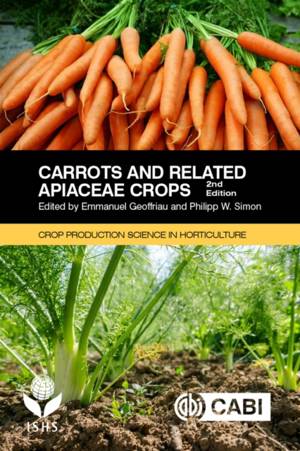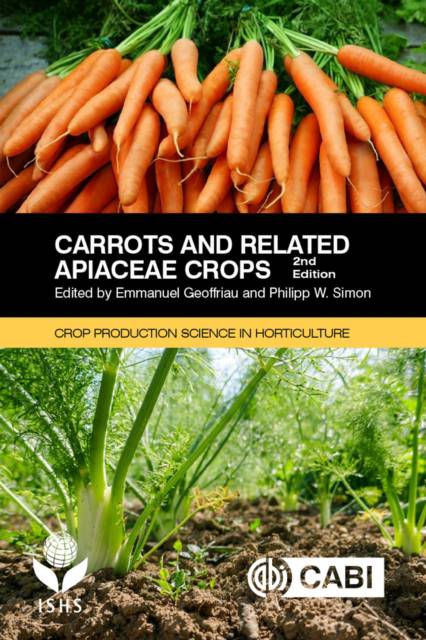
- Afhalen na 1 uur in een winkel met voorraad
- Gratis thuislevering in België vanaf € 30
- Ruim aanbod met 7 miljoen producten
- Afhalen na 1 uur in een winkel met voorraad
- Gratis thuislevering in België vanaf € 30
- Ruim aanbod met 7 miljoen producten
Zoeken
Carrots and Related Apiaceae Crops
€ 99,45
+ 198 punten
Omschrijving
Fully updated with new content and full-colour figures, the second edition of this successful book reflects developments and growth in our knowledge of carrots and related crops worldwide. It covers the scientific basis of their biology and production, with updated technical crop management content. This new edition is divided into three sections: the first considers the crops' importance and main features; the second focuses on carrot, from genetic diversity and breeding to cropping systems, pest and disease management, quality, postharvest and valorization; and the third presents the main aspects of 13 other cultivated Apiaceae.Containing a dedicated chapter on root-quality plus new chapters on organic production and consumer expectations, this book also: Highlights both unique and shared characteristics among cultivated Apiaceae species. Describes the links between scientific principles and cropping systems. Explores the relationship between crop management and product quality.An invaluable resource for all those involved in carrot and related vegetable production, this is essential reading for producers, and horticulture, plant science and food science students, as well as researchers in these areas.
Specificaties
Betrokkenen
- Uitgeverij:
Inhoud
- Aantal bladzijden:
- 368
- Taal:
- Engels
- Reeks:
Eigenschappen
- Productcode (EAN):
- 9781789240955
- Verschijningsdatum:
- 29/07/2020
- Uitvoering:
- Paperback
- Formaat:
- Trade paperback (VS)
- Afmetingen:
- 154 mm x 232 mm
- Gewicht:
- 816 g

Alleen bij Standaard Boekhandel
+ 198 punten op je klantenkaart van Standaard Boekhandel
Beoordelingen
We publiceren alleen reviews die voldoen aan de voorwaarden voor reviews. Bekijk onze voorwaarden voor reviews.







